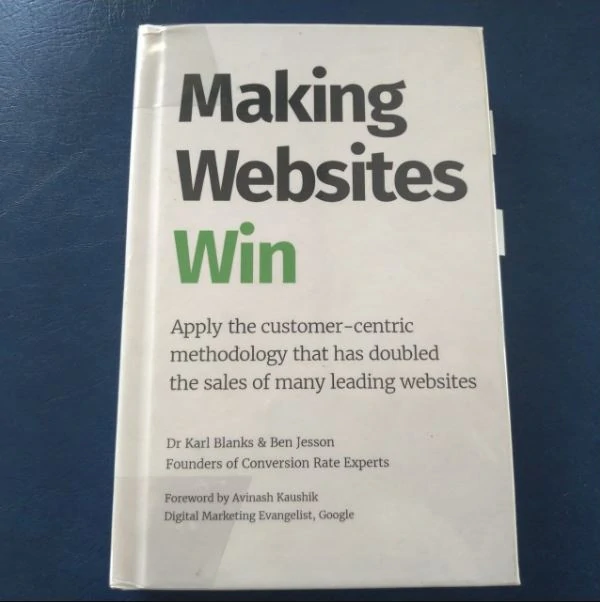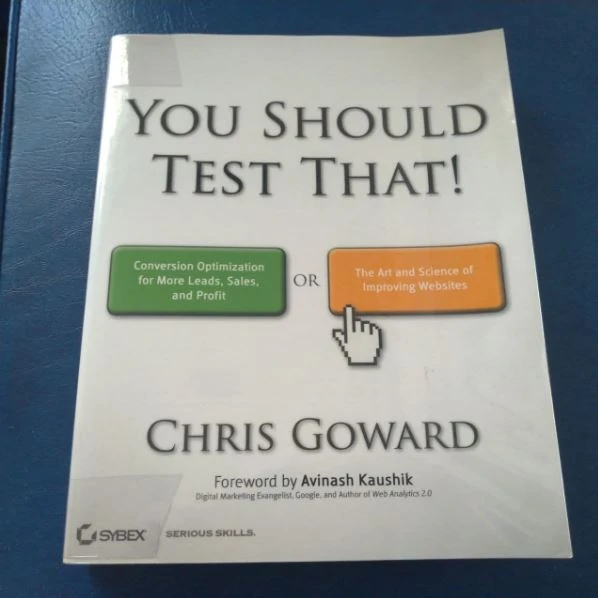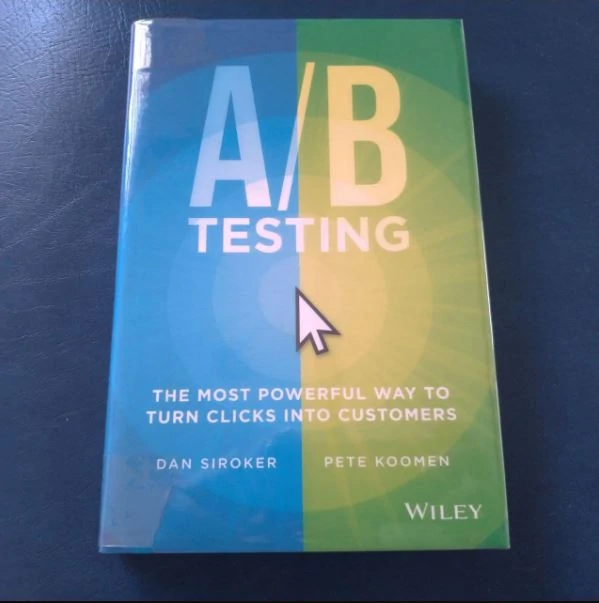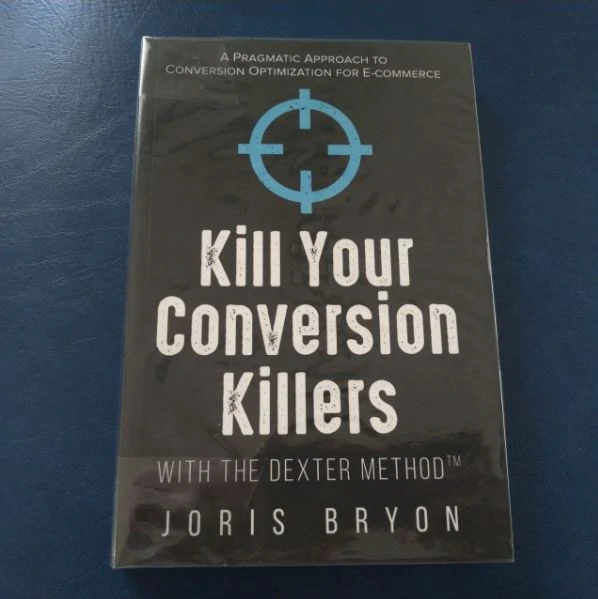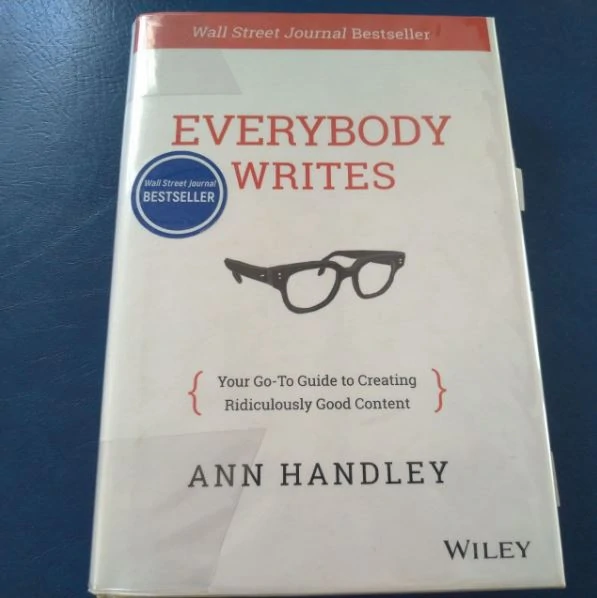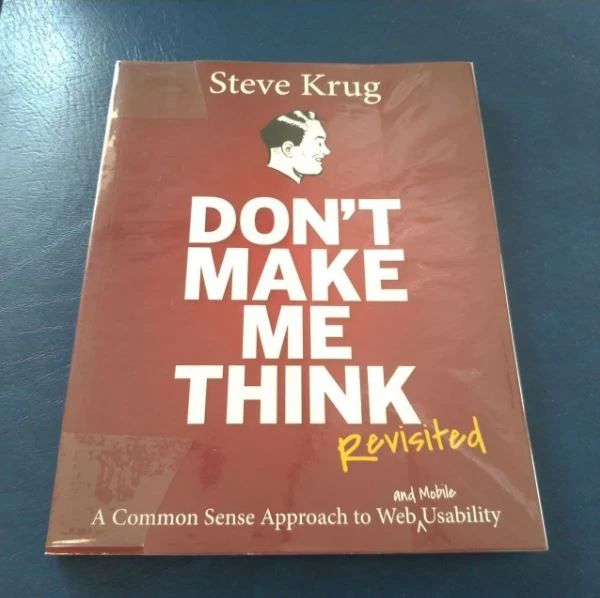Conversion rate optimization expert Peep Laja of CXL mentioned on LinkedIn that the best ideas come from reading books. I agree. But finding these resources and dedicating time reading them is the challenge.
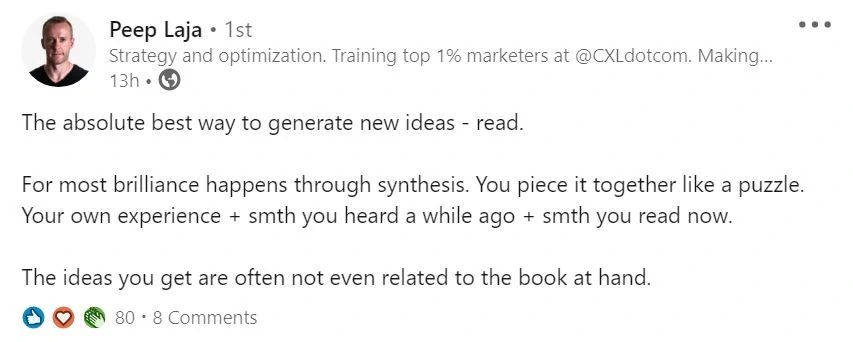
Conversion rate optimization is a space full of ideas. But it’s a tough pill to swallow and the learning curve of learning is quite steep. A person should learn web analytics, landing page design, user experience, and A/B testing. Lucky for us, there are many conversion rate optimization books to learn from.
6 Books on Conversion Rate Optimization You Should Read Today
This post contains affiliate links.
The CRO industry is of no short supply of books. Conversion rate optimization is also a melting pot of many disciples together. The books below are what I own and read. Some of them are pure CRO and some are for copywriting and web usability.
I say that this book should be anyone’s first book to start on conversion rate optimization. The team that coined the term conversion rate optimization wrote this book. They are also one of the prolific CRO agency: Conversion Rate Experts.
The book only has four chapters, but it’s 300 pages long. The book is so smart that the format optimizes toward readability. Sections in the book include:
Section 1: Why Most Web Design Is Done Wrong
Section 2: Diagnosis
Section 3: Making Websites Win
Section 4: See The Power of CRO in Action
Like any CRO process, it makes a bold claim that website designs are not only web design challenges. It also requires a process. The book an ultimate guide of sorts. It covers many grounds from web analytics, form optimization, UX design, copywriting, SEO. Other important conversion rate optimization principles are here.
I like that there’s a section in the book that has many wireframe examples on how to optimize a landing page. It teaches a framework on how to turn landing pages more readable and be conversion-centric.
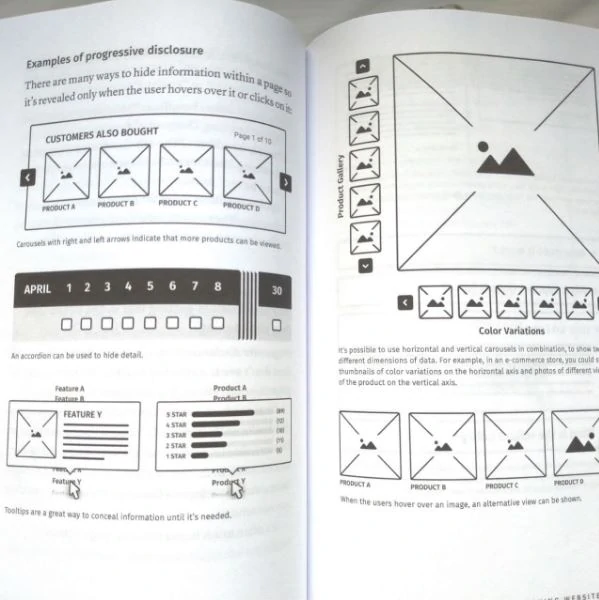
I consider this book the jack-of-all-trades information on conversion rate optimization. Chapter 4 has a comprehensive case study of CRO application.
One of the first books on Conversion Rate Optimization I read. The book still holds today. Chris Goward is one of the pioneers of Conversion Rate Optimization. He’s the CEO of the prolific CRO agency: WiderFunnel.
The book highlights the infamous HiPPO (highest-paid person’s opinion). These are individuals that hinder companies from experimentation and prevent business growth. The book makes the case the website redesigns need to be data-driven. CRO should have a process, and not be for the sake of change.
You need to design the websites for results, not aesthetics. The book contains a section on color theory and information hierarchy. The book leans on the high-level approach to experimentation.
The book also showcases its unique LIFT model. It’s a CRO approach on how to put conversion processes into an effective framework.

What makes this book unique is that this book highlights the famous PIE framework. This framework is referenced in the CRO community. You may also check the PIE framework is also showcased on their website.
Potential: How much improvement can be made on the pages?
Importance: How valuable is the traffic to the pages?
Ease: How complicated will the test be to implement on the page or template?
Another unique section in the book is how to write and optimize your value proposition. Another great tidbit is that there are case studies after chapters. On a personal note, the books tell the story of structured tests done to brands I recognized like Sims 3.
The first conversion rate optimization book I read. It gave me the first glimpse of what conversion rate optimization or A/B testing can do. Written by Co-Founder and CEO of Optimizely.
The book has a section about the Obama campaign and how A/B testing helped Dan make informed decisions. Dan Siroker also has a video the shares the story of his contributions.

After the Obama campaign section, Dan asked, “Why aren’t more people doing this?” I shared the same sentiments that made me about conversion rate optimization.
Conversion rate optimization, a/b testing, and experimentation are parallel with each other in some ways. The book says that you should do testing DURING the redesign, not after. Small incremental changes de-risk website redesigns, especially for multi corporations.
The book also highlights core principles when running experiments:
Step 1: Define success
Step 2: Identify bottlenecks
Step 3: Construct a hypothesis
Step 4: Prioritize
Step 5: Test
A nice touch is it has case studies from top companies I’m familiar with. There are chapters of experiments ran by IGN, Sims, and Disney. Another nice touch is that there’s a TL;DR section on the last page of the chapters as a summary and recap.
There’s a section of the book on how to build teams: The Experimentation Dream Team. There’s also a part on whether to build, buy, or hire an experimentation team.
Another nice touch is at the back of the book, there’s an appendix for math and statistics. You read things like confidence intervals, confidence levels, z-statistics, and others. If you have the appetite for the mathematics of a/b tests then this book is for you.
This book is another addition to books on conversion rate optimization. The book lives up to its “pragmatic” name and there are lots of practical tips in it. The Dexter Method comprises of different elements:
-Data
-EXecute
-Test
-Evaluate
-Repeat
It reinforces the experimentation culture as well.
The most useful chapter in the book is the chapter on data. This chapter is also one of the longest in the book. There’s an emphasis on pragmatic analysis on Google Analytics. Screenshots with explanations are provided.
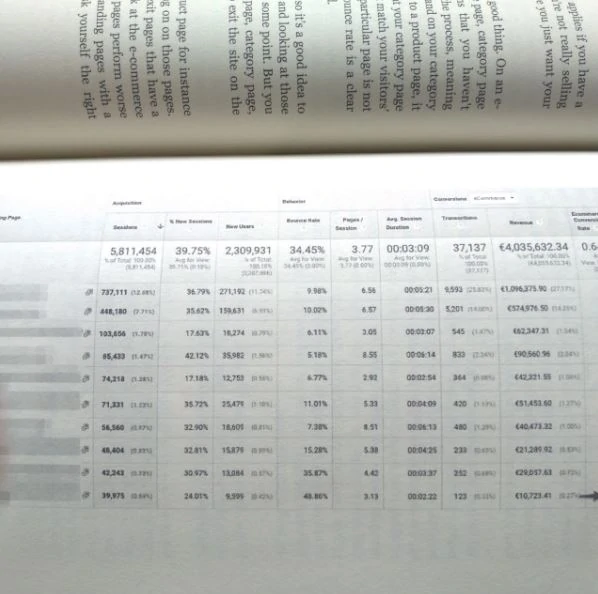
If you’re looking at Google Analytics a lot, this book feels right at home. There are sections on different GA reports like funnel reports, and acquisition reports. I’d say that the book itself is a mini Google Analytics crash course.
There’s a good chapter on landing page design principles. The entire chapter covers eCommerce. There’s a list of tips on how to optimize category pages, product pages, cart pages, and checkout pages. The book also highlights psychology with landing page design principles. You read on clarity, readability, and scarcity.
The format is very digestible. The book doesn’t explain any statistics at all, which is encouraging for basic readers. The book has the title “pragmatic” so the A/B testing concepts are more down to earth.
Writing great copy is a big part of conversion rate optimization. Ann Handley’s book “Everybody Writes” hits the nail on teaching very practical tips. Useful sections include:
-Embrace The Ugly First Draft
-Develop Pathological Empathy
-Avoid These Mistakes Marketers Make
-Writing Infographics That Won’t Make People Mock Infographics
The best practice is to have pathological empathy for your audience. Writing from their point of view. It’s an amazing playbook to get inspiration. Most readers might think “duh, this is common sense”. But it’s always beneficial to reinforce the rules.
What I like about this book is that it’s like a blog compilation on writing and content marketing blogs. It’s congested into one cohesive book. No more going from article to article to get inspiration.
There’s a part in the book on how to organize a blog post that I like. It’s a simple list but it gets the creative juice flowing on what to write.
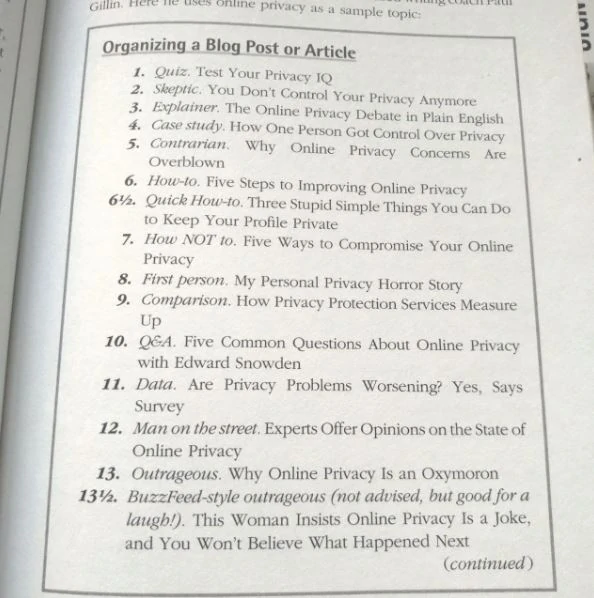
The book also covers the word length of each content format. Ideal blog post length is 1,500 while Email Subject lines should be 50 characters. There are debates about length as they are subjective, but it’s a nice touch to have.
My favorite part of the book is the whole chapter “13 Things Marketers Write“. Practical Tips on how to write a homepage, landing page, blog posts social media posts, and others.
The book covers little grammar syntax. The focus is on strategies on how to write copy that converts more visitors into customers. This book inspired me to create a blog checklist on my own.
A large of conversion rate optimization is about web usability. This book from Steve Krug is one of the best resources to study. The chapters ride on the different things about usability. Each concept is complete.
Useful: Does it do something need done?
Learnable: Can people figure out how to use it?
Memorable: Do they have to relearn it each time they use it?
Effective: Does it get the job done?
Efficient: Does it do it with a reasonable amount of time and effort?
Desirable: Do people want it?
Delightful: Is using it enjoyable, or even fun?
This book is for web design and user experience principles. This sits right at home for product managers, UX designers, and researchers. It highlights macro and micro design principles:
Visual hierarchy
Fonts
Internal links
Clickability
Forms
Web navigation
The book is readable because it’s colored and is on glossy paper. This is a book that gives a great user experience to the user. The book is also short and can be read in one sitting. There are witty images that make the reading experience fun.
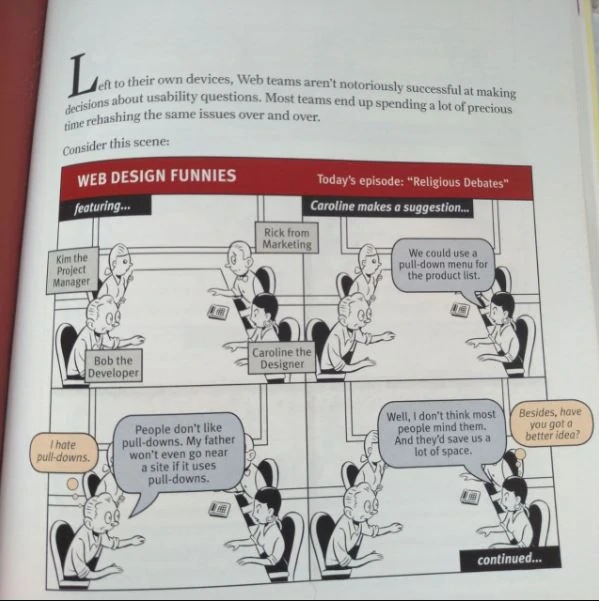
The book contains visual aids. It provides examples with witty images to complement the learning. Teaching something abstract like usability is a challenge, but the book does a great job on it.
Conclusion: Conversion Rate Optimization Isn’t Hard
Learning conversion rate optimization shouldn’t be that hard. Don’t let things scare you from learning it. There’s a lot to take in but these books are solid foundations to get started on. I used these books and other resources to run A/B tests on Google Optimize.
Though it’s important to note that it still comes from real-world applications. Experience is still the best teacher a person could have. I suggest you build your personal website and try to apply what you learned. I guarantee that learning and applying in small steps yield large rewards in the future.

